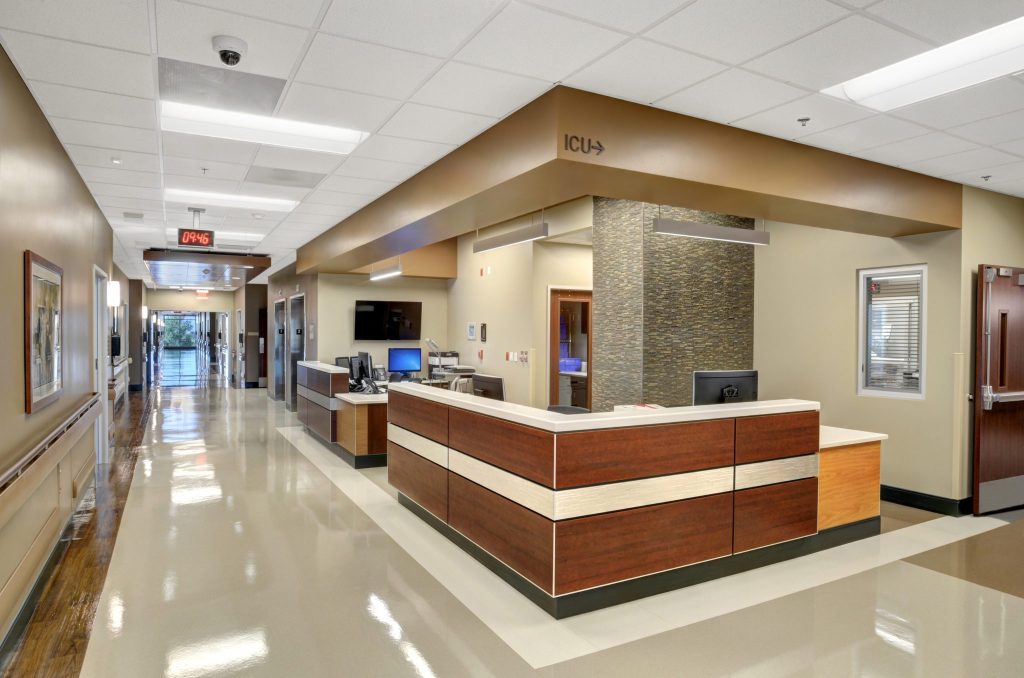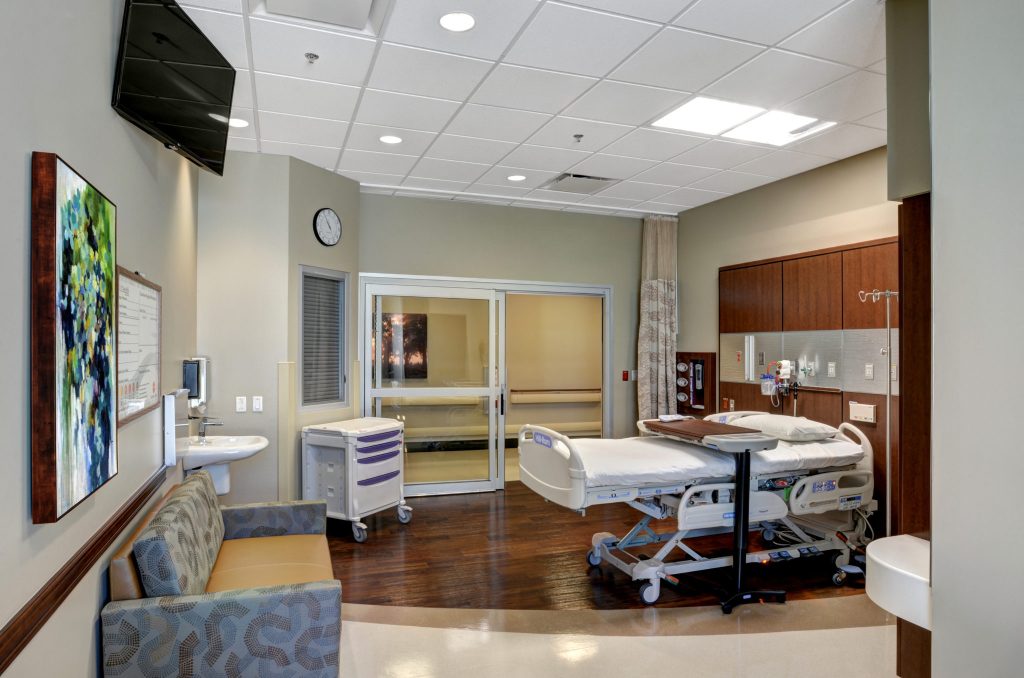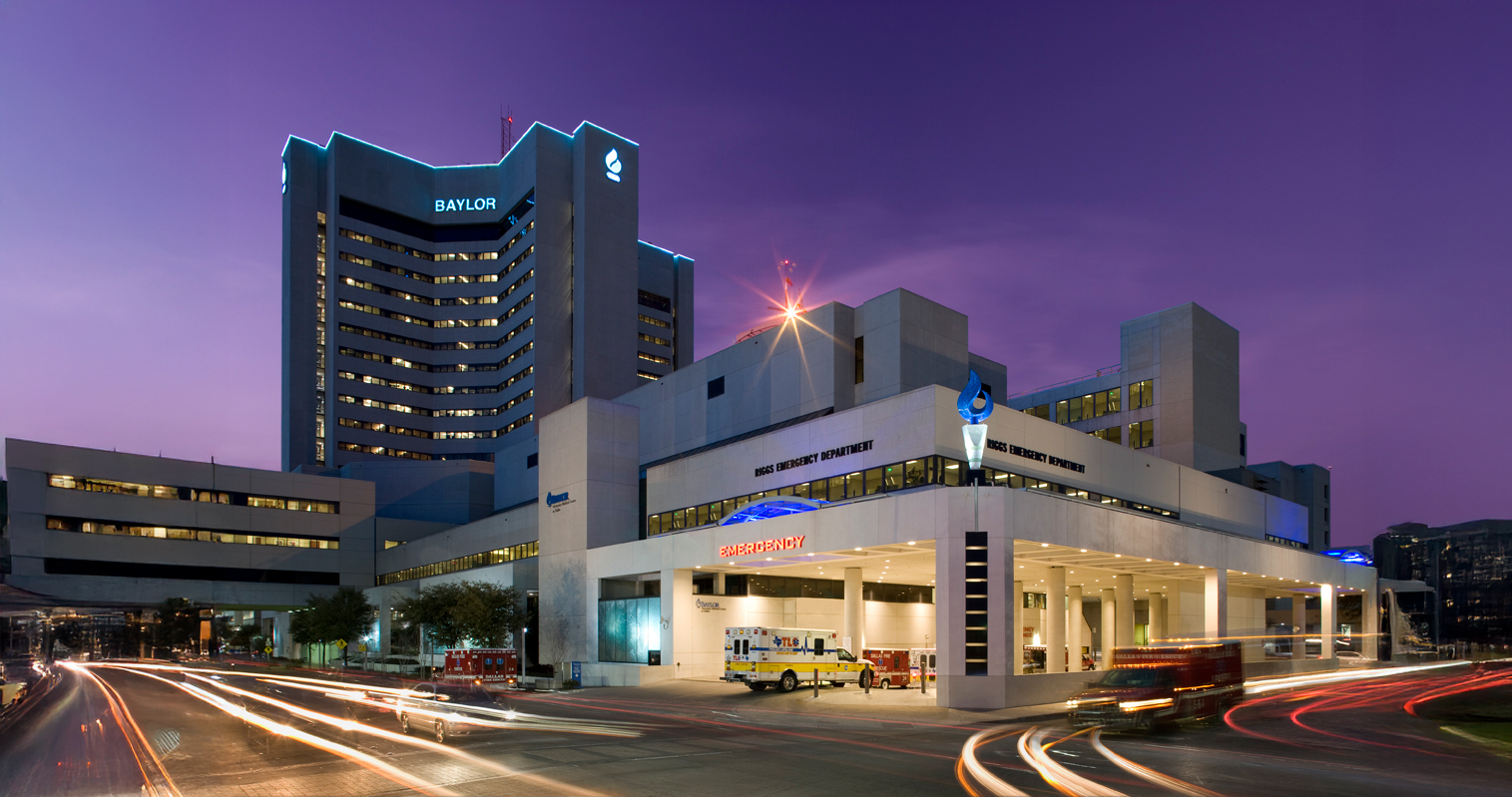Healthcare facilities operate 24/7, which presents unique energy demands compared to most commercial buildings. To manage these demands effectively, MEP systems must incorporate advanced energy management practices that prioritize efficiency without sacrificing reliability and performance. Technologies like automated energy monitoring, demand response systems, and on-site renewable energy generation, such as solar or CHP systems, play a role in managing energy loads effectively and mitigating rising utility costs. DBR is committed to delivering the best possible energy performance in healthcare facilities. We start each project by addressing key elements that can often be overlooked during the design process. Examples of high-performance energy design strategies include:
HVAC
- Heat pump chillers – These have higher overall efficiency than traditional chillers, making them ideal for simultaneous heating and cooling, while also assisting in dehumidification. Healthcare environments often have continuous demand for service water heating, steam generation, and/or hydronic heating/reheat.
- Occupancy-based VAV controllers – Regulate airflow in specific zones of a building using occupancy sensors. Airflow automatically adjusts based on presence of people, maximizing energy efficiency by reducing airflow when spaces are unoccupied.
- Heat pump heating – Provides efficient space heating by transferring rather than generating heat, offering substantial energy savings compared to electric resistance or fossil fuel combustion heating systems.
- Waste heat recovery – Captures excess heat from mechanical or electrical systems (like chillers or exhaust air) and repurposes it for space or water heating, reducing overall energy demand.
- Thermal storage – Produces and stores ice or chilled water during off-peak hours, then uses it for cooling during peak hours, helping to shift energy loads and reduce demand charges. These systems can also be used in conjunction with renewable energy sources as a “thermal battery”.
- EC motors in place of VFDs – Electronically commutated (EC) motors are more efficient than traditional motors with VFDs, especially at partial loads, and may offer better speed control and reduced maintenance.
- Fan arrays or fan walls – Use multiple smaller fans instead of one large fan to improve redundancy and operate more efficiently at varying speeds.
- VAV lab hoods – Variable air volume fume hoods reduce the amount of conditioned air exhausted by adjusting airflow based on sash position, significantly lowering energy use in labs without compromising safety.

Onsite Renewable Energy
- Photovoltaic (PV) system design and load calculations – Enables facilities to generate renewable electricity on-site, reducing peak utility demand and lowering long-term operational costs.
- On-site battery storage – Stores excess solar or off-peak power for later use, supplementing or replacing fossil fuel engine generators.
Water Resource Conservation
- Rainwater harvesting – Captures and stores rainwater for non-potable uses (e.g., irrigation or cooling tower makeup), reducing demand on municipal water and sewer systems. Hospitals often have large roof areas, making this strategy highly efficient.
- Water-efficient fixtures – Low-flow faucets, toilets, and showers as well as high-efficiency appliances reduce overall water consumption without sacrificing performance. Healthcare facilities typically use high volumes of water for cooking, sterilization, personal hygiene, and cleaning.
- Condensate recovery for flush fixtures or irrigation – Reclaims water from HVAC systems (typically air handling unit cooling coils) and reuses it for toilet flushing or irrigation. Healthcare facilities generate significant condensate due to high cooling loads, making this a practical and resource-saving approach.

Energy Efficiency – Plumbing
- Heat pump water heaters (air or water source) – Use ambient heat to efficiently produce hot water, reducing energy use by 50% or more compared to conventional systems. Hospitals have high hot water demand, so the savings are substantial.
- Water heating controls (timers, temperature reset) – Optimize heating schedules and setpoint temperatures to match actual usage patterns, minimizing standby losses and unnecessary heating. Effective for spaces like staff lounges, patient rooms, or surgery centers.
- Heat recovery for domestic water heating – Captures waste heat from HVAC systems or drain water and repurposes it to preheat incoming cold water, significantly reducing energy needed for hot water production.
- Oversized piping and valves to reduce pump brake horsepower (BHP) – Reduces friction losses, allowing pumps to operate at lower pressure and consume less energy. Especially useful in large, distributed healthcare plumbing systems.
- Heat pump clothes dryers – Use refrigerant cycles instead of resistance heating to dry clothes more efficiently. Ideal for hospital laundry facilities where dryers run continuously, and energy costs add up quickly.
By investing in energy-efficient and water-conserving solutions, facilities can reduce both operational costs and their carbon footprint. The design team can tailor strategies to the specific layout and function of healthcare spaces, ensuring that critical areas such as operating rooms and intensive care units receive the necessary utilities, while energy and water consumption are optimized elsewhere.
Planning for long-term energy savings can optimize the operating cost of a facility while also increasing resilience and contributing to sustainability goals. Healthcare facilities traditionally have a great demand for energy and water, which means they represent a great opportunity for conservation. Mechanical, electrical, and plumbing systems can play a key role in reducing costs while maintaining safe and effective environments for healing.

